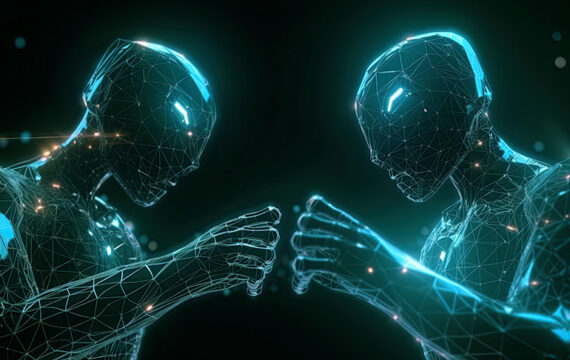Technologies are revolutionizing facilities management (FM), changing occupants’ expectations of building capabilities and comfort. Modern buildings are highly automated and comprise versatile control systems to help facility managers ensure efficient resource utilization and effectively operate their smart building infrastructures. The critical consideration here is the consolidation of all these new aspects of FM services into one operable model. This is where digital twin facility management solutions comes in.
The role of digital twin facility management software
By now, the digital twin has become a widely familiar concept in the manufacturing, automotive, and logistics industries. All of these sectors are already profiting from the technology’s advantages, such as increased reliability, improved productivity and safety, and enhanced cost-efficiency. In the context of a digital twin facility management software, digital twins have the ability to replicate the entire built ecosystem, rather than just a single asset. This means they can create a digital copy of a complete facility with all underlying networks and infrastructure.
The application of virtual modeling in a software for facilities management – digital twin facility management software – adds an extra dimension to traditional 3D Building Information Modeling (BIM), with real-time data harvested from connected sensors and smart IoT devices. Digital twinning unlocks vast pools of previously inaccessible information, opening up a new understanding of smart facility management and operations with their impact on occupant comfort and satisfaction.

How digital twin facility management technology is transforming smart facilities
Digital twin modeling enhances traditional smart facility management software with highly accurate, as-is digital descriptions of every aspect of a built asset. They enable hyper-realistic simulations of dynamically changing facility conditions, showing differences between the original design and actual operations. Armed with comprehensive, real-time virtual facility models, planners, owners and contractors can identify current faults, anticipate risks and visualize future changes with unprecedented accuracy.
Digital twin software finds application across all stages of smart facility management, from asset monitoring through operations, and is fast becoming a critical piece of construction intelligence and smart facilities solutions. Let’s take piping as an example. Modular digital twins recreating individual physical pipes and components in a virtual environment can be integrated into a centralized view of the entire pipe and sewer network. Working together, digital replicas allow for constant tracking of every hydraulic piece to give an outline of the entire system and its current and past conditions. In terms of performance, digital twins give network operators strict control over water and wastewater flows so they can better understand capacity requirements, improve pipeline utilization and prevent failures. In the operations layer, 3D modeling helps network operators make data-driven decisions enabled by intelligent condition monitoring to ensure smooth, faultless network operation.
Dynamic condition monitoring
Dynamic or intelligent condition monitoring is hardly a new concept. However, the existing condition-based tracking tools have often proven inefficient, failing to deliver accurate data in time for prompt reaction to the fast-changing circumstances. Unlike smart facility solutions, these solutions usually work with static, historical information and reflect facility conditions that are always lagging one step behind the current state of being.
In contrast, a digital twin model feeds on information that is being collected in near real-time from fire detectors, HVAC equipment, lighting fixtures, consumption meters, indoor sensors, and other systems installed on the premises. Continuously powered by dynamic data, they accurately recreate every single metric within all facility systems, adding to collective facility intelligence that mirrors exact on-site conditions and enables immediate action when, for example, a leaking valve or a faulty sensor is detected.
Insights-driven predictive maintenance
Predictive maintenance is the leading use case for the application of digital twins in Industry 4.0. The approach is also broadly used in smart facility management, where advanced predictive practices are estimated to generate up to a 20% reduction in a building’s maintenance and energy costs. IoT and digital twin technologies with smart facility solutions are instrumental in generating these savings, as they make it possible to accurately determine maintenance needs before any failure or downtime occurs.
Digital twin-based predictive maintenance software pulls in real-time records from every physical asset within a facility and analyzes them against historical readings. Any change affecting facility systems and networks triggers an update in a corresponding 3D digital model. Through continuous learning, digital replicas can immediately recognize that a given component is wearing down and requires attention, and signal the issue to the facility manager. Armed with this knowledge, facility operators know when to take action, and may run simulations to predict how an object will behave under different conditions. The opportunity to test various maintenance approaches allows them to anticipate every possible outcome before dispatching a maintenance team on-site. As a result, they can find a reliable IoT development company and enhance the overall asset lifecycle, avoiding over-servicing and over-maintaining assets and keeping maintenance costs in check.
Autonomous facility operations
Digital twin facility management software brings together dynamic and static data from multiple sources in 3D models, providing valuable insights into energy and water consumption patterns, room occupancy, HVAC utilization, and other essential aspects of facility operations. This knowledge benefits facility managers, empowering them to adapt facility systems to enhance occupant comfort.
3D modeling technology as a digital twin facility management solution holds great promise for sustainable operations, helping building managers reduce environmental impact. Digital twins deliver sophisticated insights into building metrics that enable greener facilities that consume less water and electricity, and generate less waste, than traditional buildings. Those changes result not only in a streamlined occupant experience but also in expense optimization with smart facilities solutions. According to the Center for Integrated Facility Engineering at Stanford, digital twin technologies can yield up to 9% savings in operating expenses.
What’s more, advancements in facilities management software and IoT sensors lay the groundwork for even more innovative applications, heralding the era of humanized, self-maintaining facilities capable of operating independently of support from public services. Intelligent buildings will continuously study tenant behavioral patterns (such as room occupancy throughout the day, room lighting and temperature preferences, etc.), grow their understanding of human needs and adjust the ecosystem to meet these. They will use digital twin modeling to autonomously monitor device and network statuses and connect with the contractors’ management systems, if needed, pointing to an asset that needs fixing and supplying all the vital information to bring it back to operation.

A bright outlook for virtual modeling in software for facilities management
Through its unique ability to continuously update virtual models with data aggregated from physical sources, digital twin facility management technology is fast becoming an enabling force behind preventive and predictive strategies for energy-efficient, smart buildings of the future.
3D modeling technology opens up new avenues to improve condition monitoring, streamline maintenance, and increase occupant comfort, driving considerable savings along the way. Thanks to digital models, you’ll be able to understand the impact of your decisions long before you implement them digitally.
Contact our experts and learn more about how to reduce operational costs by eliminating unforeseen failures with digital twins and other emerging virtual modeling technologies.


